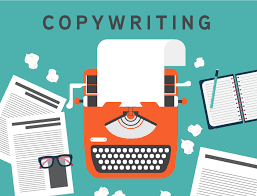“Boost Your Paid Ads Performance with Better Copywriting Techniques”
Introduction
In today’s digital marketing landscape, success in paid advertising isn’t just about eye-catching visuals or laser-targeted audiences. One of the most critical—and often underestimated—elements of a high-performing ad is copywriting. Your words have the power to attract, engage, and ultimately convert.
Whether you’re running ads on Facebook, Instagram, Google, or any other platform, understanding the importance of copywriting in paid ads is essential for standing out in the crowded digital space. In this article, we’ll dive deep into why copywriting matters, its key principles, and how to create ad copy that resonates with your audience and boosts conversions—all while aligning with SEO best practices.
What is Copywriting?
Copywriting is the art of writing persuasive text (or “copy”) that motivates the reader to take a specific action—clicking a link, making a purchase, signing up for a newsletter, or downloading an app. Unlike content writing, which informs or entertains, copywriting is directly tied to marketing and sales.
Why Copywriting Matters in Paid Advertising
1. You Have Seconds to Make an Impact
In a fast-scrolling digital world, your ad has only 3–5 seconds to capture attention. Strong, punchy copy can mean the difference between someone ignoring your ad or engaging with it.
2. Higher Click-Through and Conversion Rates
Well-written ad copy doesn’t just attract attention—it drives action. It speaks directly to the reader’s pain points and offers a compelling solution, resulting in higher CTR and conversion rates.
3. Communicates Value Clearly
Effective copy explains why the product matters, not just what it is. It focuses on benefits, not just features.
4. Builds Trust and Credibility
Clear, confident copy builds trust with potential customers. It reflects professionalism and reliability, which are essential for conversion.
5. Reduces Ad Spend Over Time
Platforms like Facebook and Google reward high-performing ads with lower CPCs and higher impressions, meaning your budget stretches further when your copy converts.
Core Elements of High-Converting Ad Copy
1. Know Your Audience
You can’t write powerful copy without understanding:
- Who are your ideal customers?
- What are their pain points?
- What are they searching for?
- What motivates them to act?
Speak directly to their needs and desires.
2. Craft a Powerful Hook
Your opening line or headline must stop the scroll. Great hooks:
- Ask a question
- Address a pain point
- Make a bold promise
- Spark curiosity
Example:
“Struggling to lose weight? Discover a natural solution that works without starving yourself.”
3. Focus on Benefits, Not Just Features
Features tell. Benefits sell.
✅ Feature: “Our supplement contains Vitamin C.”
✅ Benefit: “Boost your immune system and stay healthy all year round.”
4. Tell a Story
Storytelling is one of the most effective copywriting techniques. People remember stories more than facts or stats.
Example:
“Sarah battled acne for years, trying countless products… until she found this natural formula. In just 10 days, her skin began to glow again.”
5. Include a Strong Call-to-Action (CTA)
Every ad needs a clear and compelling CTA that tells the reader what to do next:
- Shop Now
- Sign Up Free
- Claim Your Discount
- Don’t Miss Out
Use active, directive verbs and create urgency when appropriate.
6. Appeal to Emotion
Buying decisions are often driven by emotion and later justified with logic. Use emotionally resonant words that trigger feelings like:
- Relief
- Happiness
- Confidence
- Pride
- Excitement
7. Build Trust Through Social Proof
Incorporate elements such as:
- Customer testimonials
- Star ratings
- Money-back guarantees
- Certifications or awards
These boost credibility and reduce friction.
How Copywriting Supports SEO in Paid Advertising
Even though SEO is typically associated with organic search, good copywriting aligned with SEO principles can also enhance paid ads performance, especially in platforms like Google Ads.
Here’s how SEO and copywriting work together in ads:
- Use target keywords in your headlines and descriptions for relevance.
- Ensure alignment between ad copy and landing page content.
- Optimize your ad extensions and meta descriptions with SEO-friendly phrases.
- Understand and write to the search intent of your audience.
- Improve Quality Score in Google Ads, which lowers CPC and improves ranking.
Common Copywriting Mistakes in Paid Ads
Avoid these pitfalls to ensure your ad copy performs at its best:
- Vague language with no clear benefit
- Talking about the product, not the customer
- Overpromising or using hype without proof
- Weak or missing CTA
- Not testing different copy variations (A/B Testing)
Real Examples of Effective Ad Copy
Example 1 – Skincare Product:
“Say goodbye to acne for good!
100% natural ingredients. Visible results in just 7 days.
Order now and feel confident in your skin again.”
Example 2 – Online Course:
“Want a skill that can change your life?
Learn digital marketing and start earning from home in just 30 days.
Enroll for free – limited spots available.”
Pro Copywriting Tips for Better Ad Performance
- Study competitor ads—see what works and what doesn’t.
- Write like you talk—use a natural, conversational tone.
- Keep it simple—short sentences, clear language, easy to read.
- Speak to one person—not a crowd.
- Always test different headlines, hooks, CTAs, and copy structures.
Conclusion
Great copywriting is at the heart of every successful paid ad campaign. It’s not just about being clever with words—it’s about connecting with your audience, addressing their pain points, and guiding them to take action.

